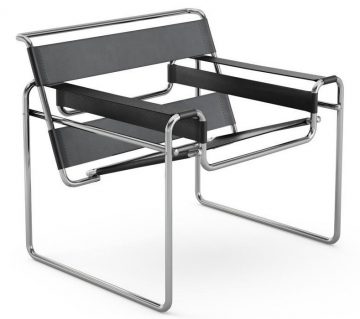Morgan Meis in The Easel:
This is the last of a three-essay exploration of the history of The Bauhaus in light of the 100 year anniversary of its founding. Previous essays can be found here and here.
 In the late 1950s, Marcel Breuer took on a commission to design a church in Minnesota. He was working with the engineer Pier Luigi Nervi. The result of Breuer and Nevi’s efforts is one of the most terrifying structures ever built.
In the late 1950s, Marcel Breuer took on a commission to design a church in Minnesota. He was working with the engineer Pier Luigi Nervi. The result of Breuer and Nevi’s efforts is one of the most terrifying structures ever built.
Breuer, born in Hungary, was a charter member of the Bauhaus school. He started as one of the very first students at the school in Weimar. He became a star pupil under the tutelage of Walter Gropius, who made Breuer head of the carpentry shop while he was still a student. Breuer later taught at the Dessau campus. Sometime in 1925 or ‘26, he designed the hugely iconic Wassily chair (known initially as the Model B3 chair, then later renamed after Wassily Kandinsky), a design that came to be almost synonymous with the Bauhaus look, for obvious reasons.
I say ‘obvious reasons’ because the Wassily chair, with its tubular metal construction and sparse look, has all the embrace of domesticated industrial design that so characterized the first decades of Bauhaus. And the damn thing works, somehow. That’s to say, it preserves a sense of comfort and an attention to the human body even in its radical minimalism.
More here.
